

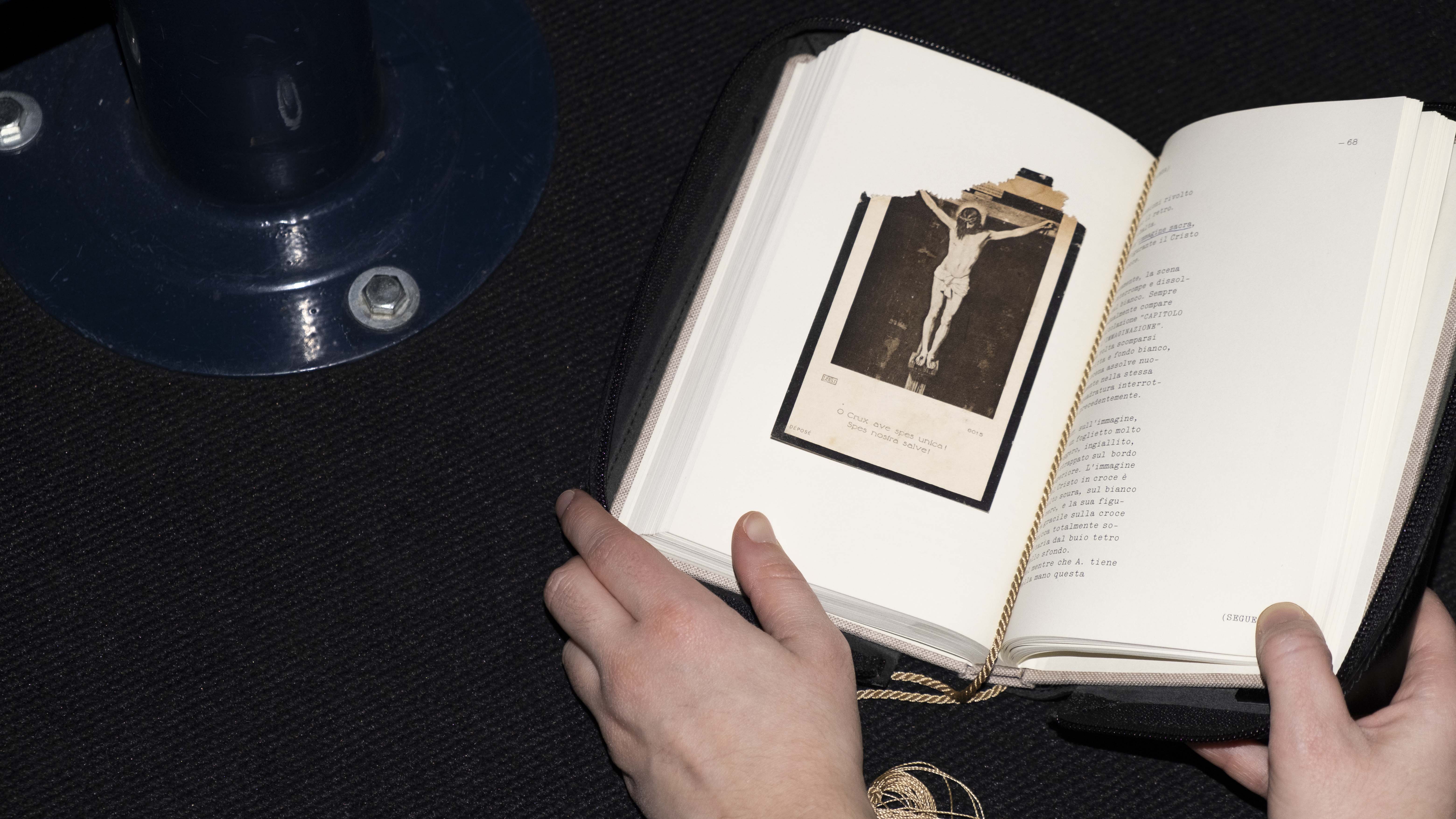
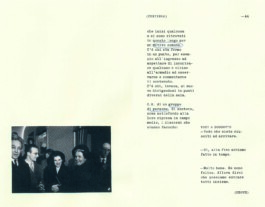
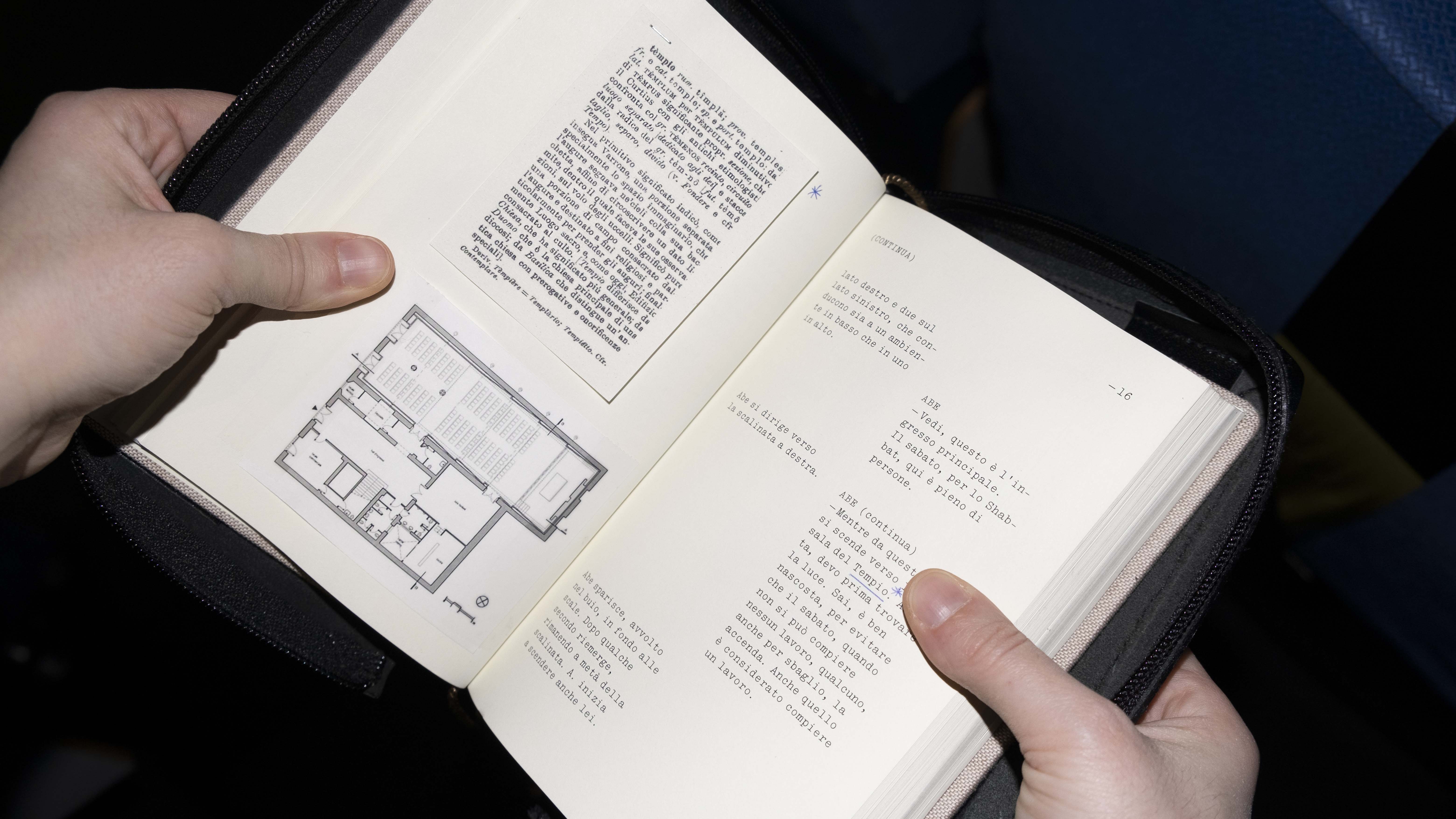
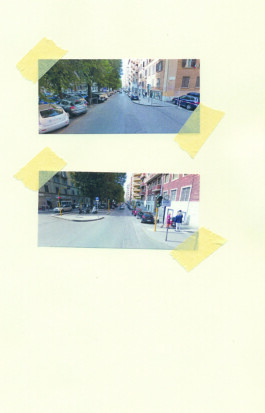
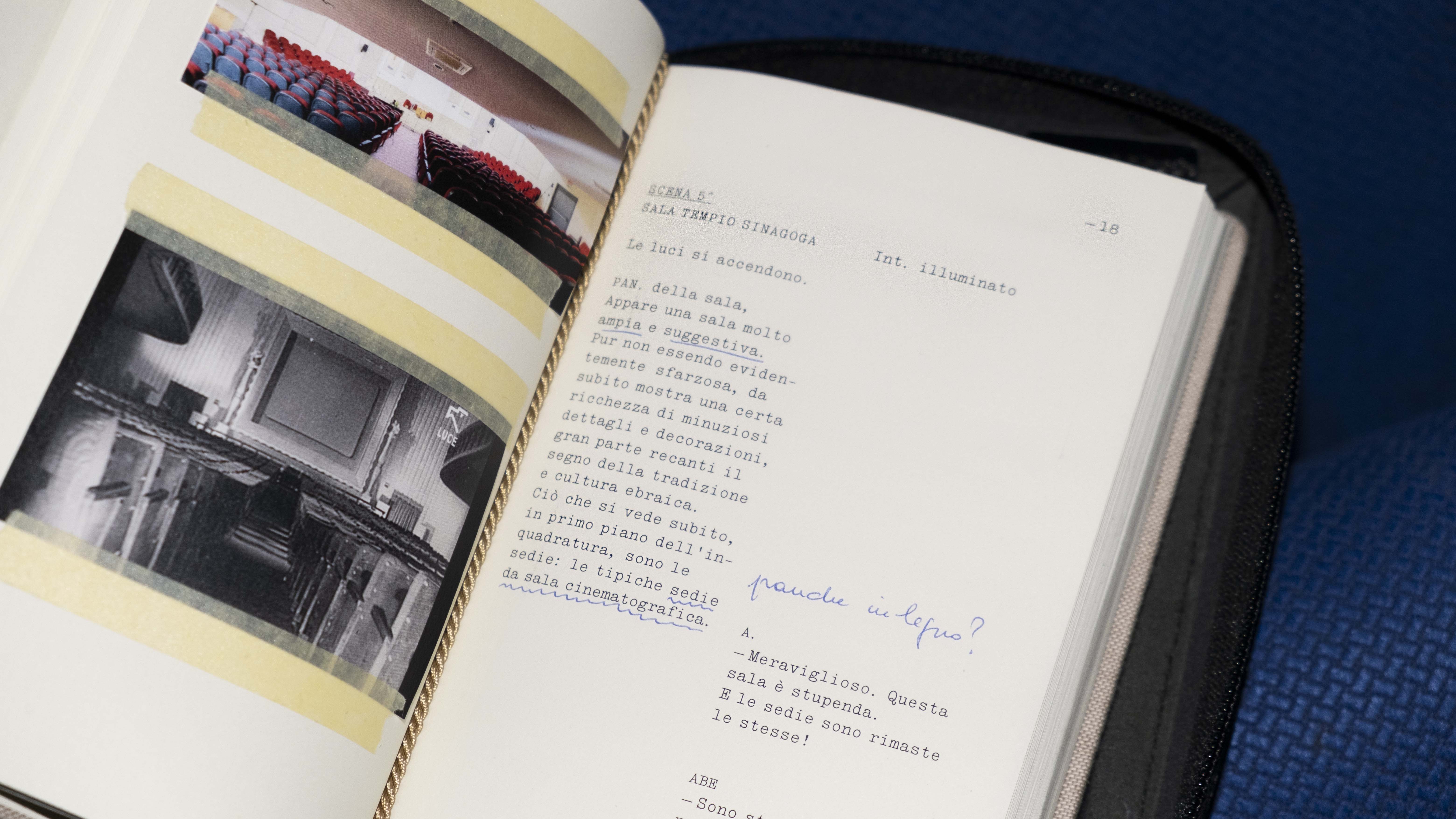
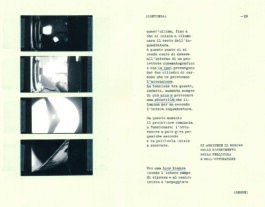
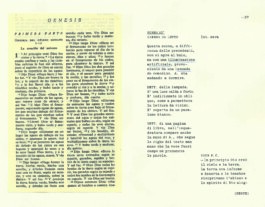
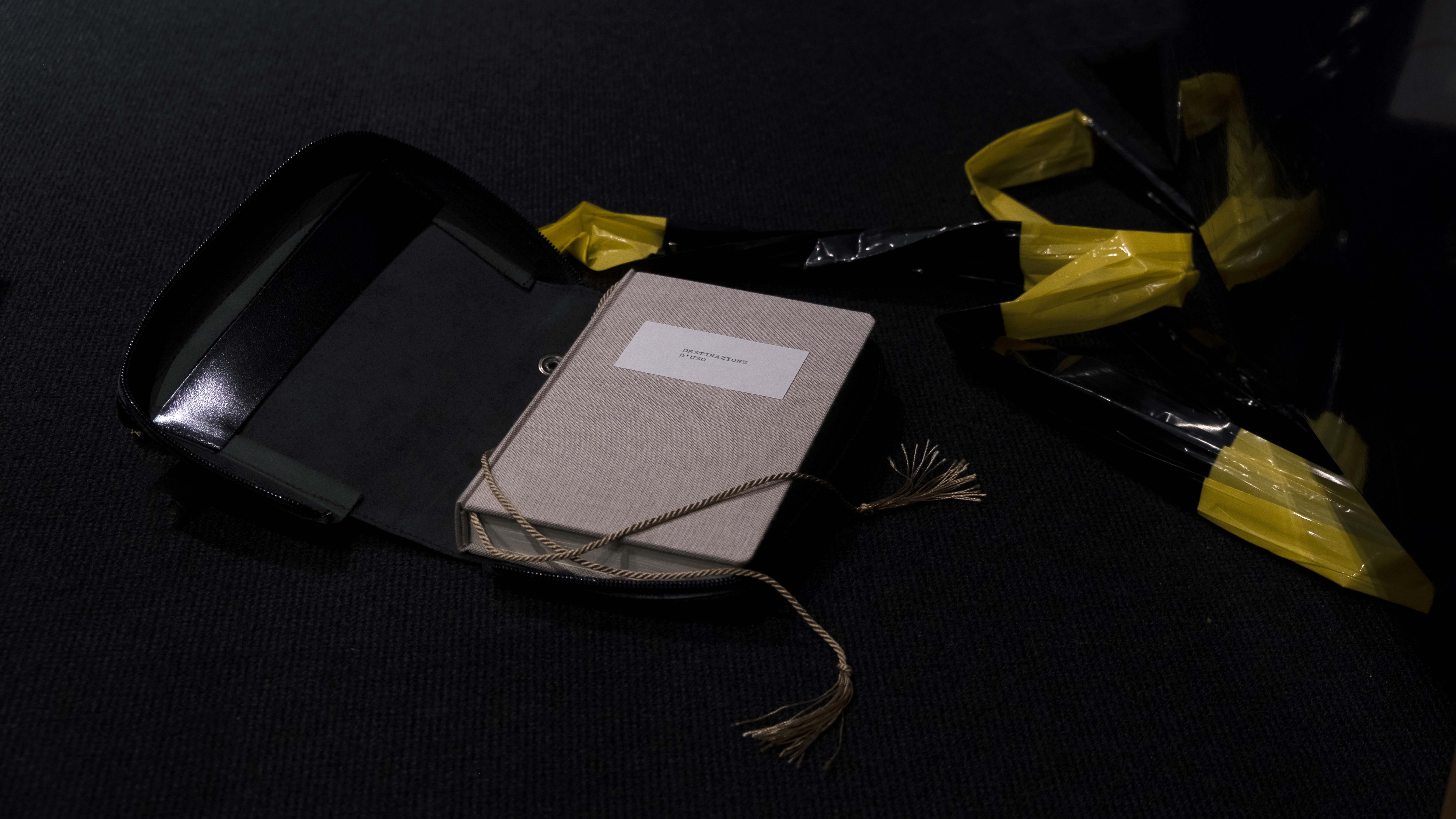
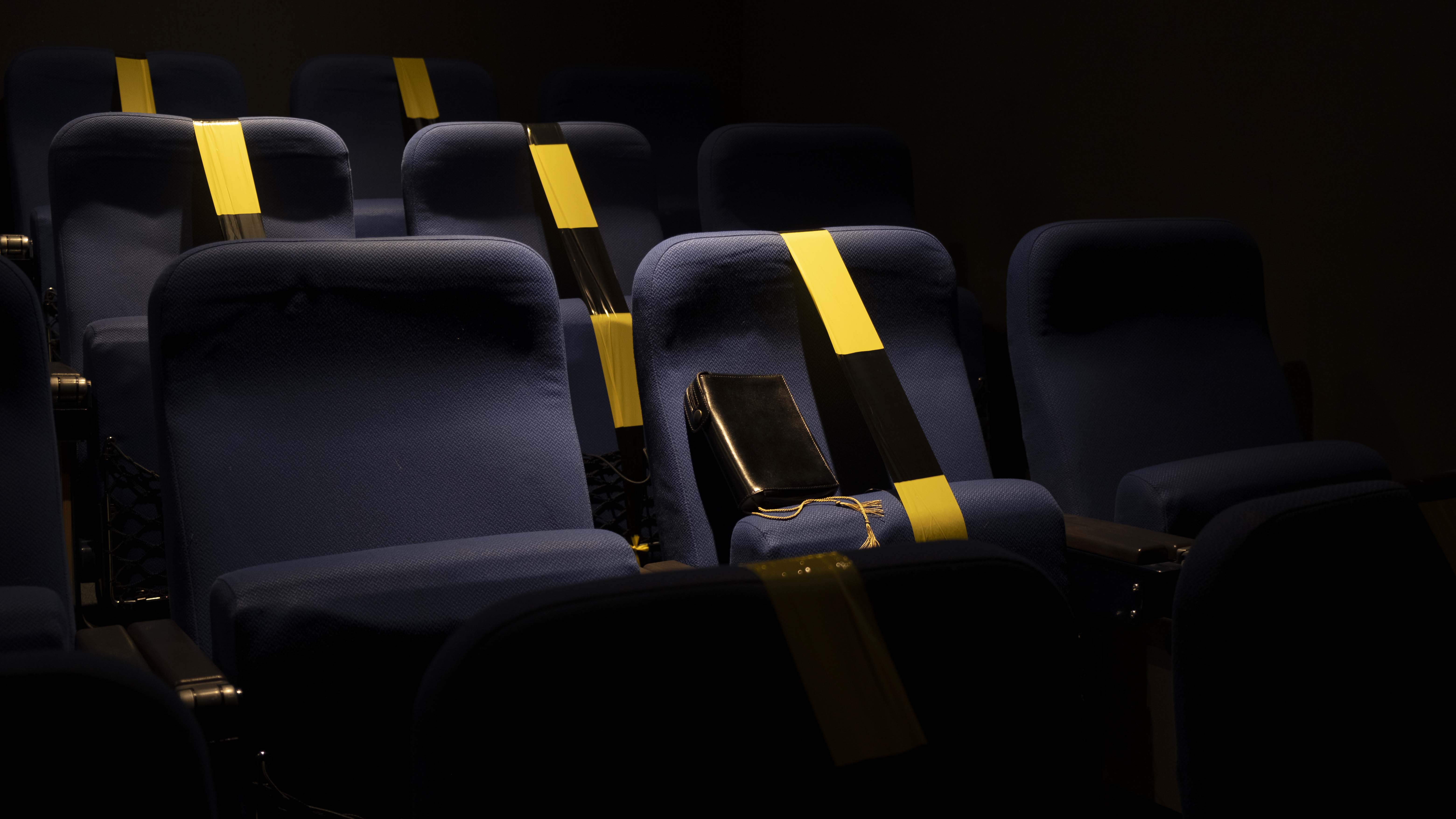
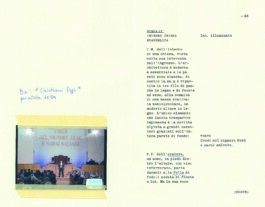
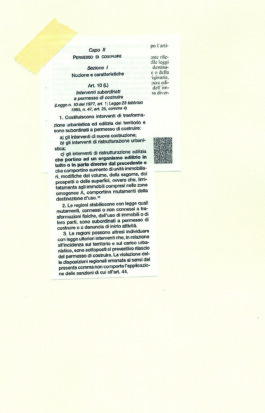
↑
Destinazione d'uso (Intended use) — 2017
‘Destinazione d’uso’ is an artist’s book, a book as an object where the visual languages of cinema and cult coexist: the screenplay and the liturgical book. Since the crisis of the movie industry in the 1980’s, in Rome, a number of cinema theatres have changed their intended use. Transformed, some of them became places of worship for diverse religious confessions. Yet something remains unchanged. The very foundation of this research is the quest for common aspects between things that seem distant and difficult to relate. Here, cinema and cult, quite different aspects of human life, are provocatively associated. By virtue of their performative character, they both delimit a liminal space, a space separate from the sociocultural environment where the unique and unrepeatable performative event takes place, recreating, staging and therefore reflecting on society itself. Through both religious and cinematic performance, society and culture are broken down into their constitutive elements, which are then reassembled in a completely free way (Turner 1986, 36). Thus the experience of reality is transformed into an “expression”, that is to say something that can be experienced and thought by an audience. The work is based on both a theoretical study and a field research in the form of interviews and participated observation of the liturgical rites that take place in the transformed theatres in Rome.
The final object, while taking the outer form of the liturgical book, borrows the layout and terminology from the traditional film scripts accompanied by the director's visual notes. The investigative process of research and association of the two matters becomes the subject of a movie that does not actually, or maybe not yet, exist.
artist’s book, 11,4 x 18 cm, 180 pp, black leather breviary cover
This project was realised with artist Matteo Guidi as thesis supervisor
Turner, Victor W. From ritual to theatre: the human seriousness of play. Performing Arts Journal Publications, 1982













Destinazione d'uso (Intended use) — 2017
‘Destinazione d’uso’ is an artist’s book, a book as an object where the visual languages of cinema and cult coexist: the screenplay and the liturgical book. Since the crisis of the movie industry in the 1980’s, in Rome, a number of cinema theatres have changed their intended use. Transformed, some of them became places of worship for diverse religious confessions. Yet something remains unchanged. The very foundation of this research is the quest for common aspects between things that seem distant and difficult to relate. Here, cinema and cult, quite different aspects of human life, are provocatively associated. By virtue of their performative character, they both delimit a liminal space, a space separate from the sociocultural environment where the unique and unrepeatable performative event takes place, recreating, staging and therefore reflecting on society itself. Through both religious and cinematic performance, society and culture are broken down into their constitutive elements, which are then reassembled in a completely free way (Turner 1986, 36). Thus the experience of reality is transformed into an “expression”, that is to say something that can be experienced and thought by an audience. The work is based on both a theoretical study and a field research in the form of interviews and participated observation of the liturgical rites that take place in the transformed theatres in Rome.
The final object, while taking the outer form of the liturgical book, borrows the layout and terminology from the traditional film scripts accompanied by the director's visual notes. The investigative process of research and association of the two matters becomes the subject of a movie that does not actually, or maybe not yet, exist.
artist’s book, 11,4 x 18 cm, 180 pp, black leather breviary cover
This project was realised with artist Matteo Guidi as thesis supervisor
Turner, Victor W. From ritual to theatre: the human seriousness of play. Performing Arts Journal Publications, 1982
↑